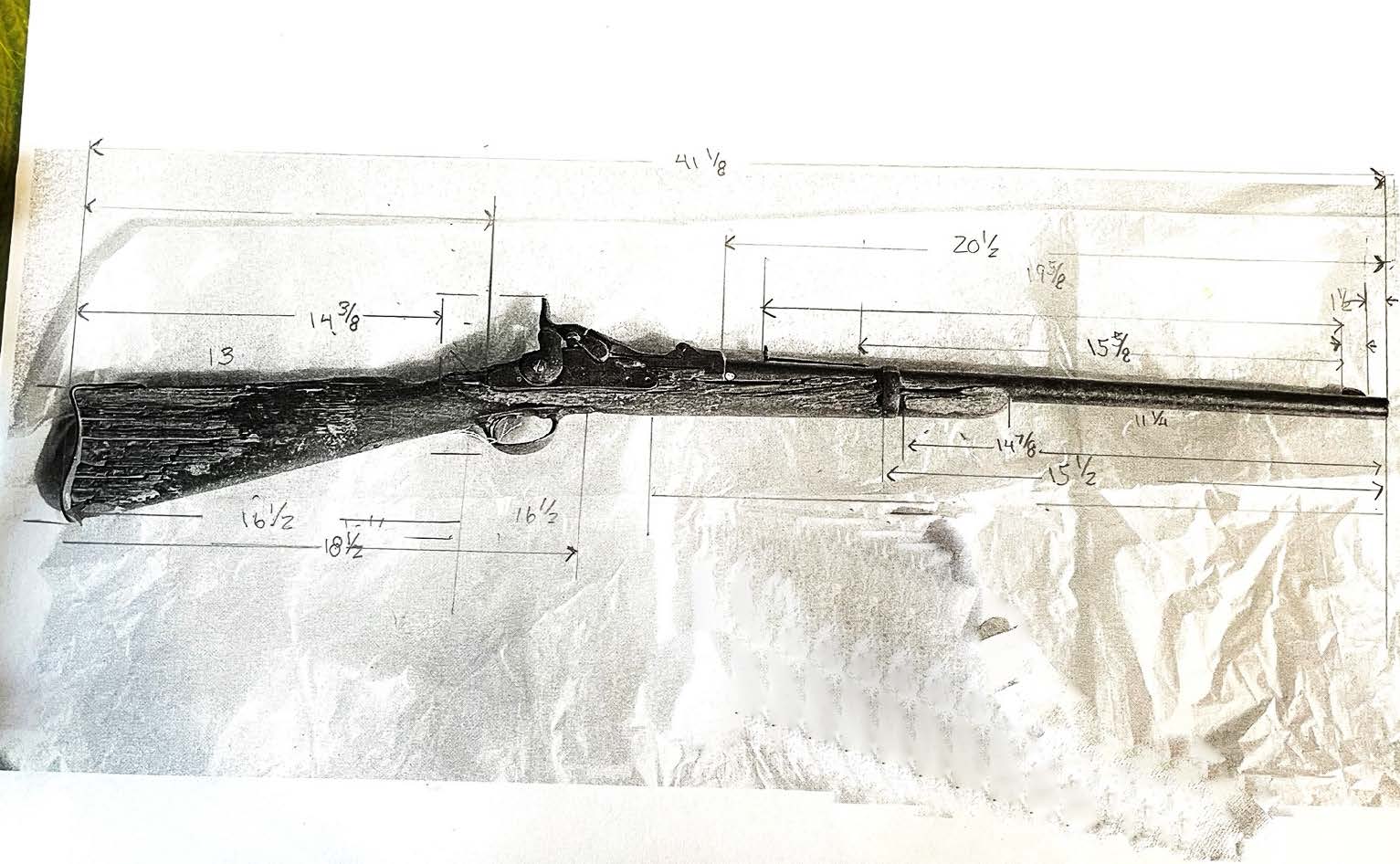Some information may be outdated.
Look out for new featured objects in 2024

The Museum’s current floor plan features two spaces: the north gallery which exhibits objects from Moab’s history across time, and the south gallery which introduces special, temporary exhibitions. These south gallery exhibits last four to six months each, though sometimes the Museum features smaller “pop-up” and community-curated exhibitions such as the Quilt Show, which has long been a tradition during the month of May. In 2024, we anticipate replacing some featured objects in the north gallery with new collections from Moab’s history. This process will involve the curation of exciting stories never told before about some of the objects that visitors may remember from the Museum prior to its renovation.
One of these objects is a Springfield Model 1873 carbine sourced from Moab’s first doctor, “Doc” J.W. Williams, via the National Park Service around 1958. The well-weathered firearm sparked our staff’s attention during the transfer of collections to the new Collections Storage Facility. According to records, the firearm was recovered from the Pinhook Battle site, the site of a fight between cowboys and Utes that took place in Pinhook Valley near the head of Castle Valley, Grand County, Utah, on June 15, 1881. To substantiate the claim that the carbine may have been utilized during the battle, the Moab Museum recruited help from Monticello-local archaeologist, author, and researcher Lee A. Bennett.

Bennett’s extensive research sought to answer questions such as: Where on the land might the carbine have been deposited, and for how long, judging by its state of preservation? Was the firearm protected from the elements, or potentially trampled by grazing cattle? Can we determine who used it, and how, by examining usewear? What is the history of each working part (including its manufacturer, and date of manufacture), and does that information substantiate the possibility of the firearm having been used in the Pinhook battle, or suggest that it was deposited sometime thereafter? How available were weapons, and how were they traditionally stored and used by both cowboys and Ute men in the late 1800s in the area? All of these questions and more were considered in Bennett’s investigation and will be available to the community in the upcoming year.
For now, we have several speculations based on Bennett’s assessment and its relevant documentation:
- If the carbine was used during the Pinhook Draw battle, “the gun could have been used by either the Utes or cowboys, but was probably a cowboy’s weapon given the location of the battle and descriptions of battlefield logistics. It was recovered from the battlefield because it had been dropped when a cartridge jammed or was hit by a bullet and splintered the stock.”
- If the carbine was not used in the Pinhook Draw battle, it was likely “dropped or discarded in the battlefield vicinity several years later by a hunter, prospector, or cowboy. It was picked up by someone else and provided to Williams, telling him it came from the scene of the Pinhook fight.”
Stay tuned for more information on this new exhibit and relevant programming, including Lee Bennett sharing her research process!
The Moab Museum is dedicated to sharing stories of the natural and human history of the Moab area. To explore more of Moab’s stories and artifacts, find out about upcoming programs, and become a Member, visit www.moabmuseum.org.
Appreciate the coverage? Help keep local news alive.
Chip in to support the Moab Sun News.





